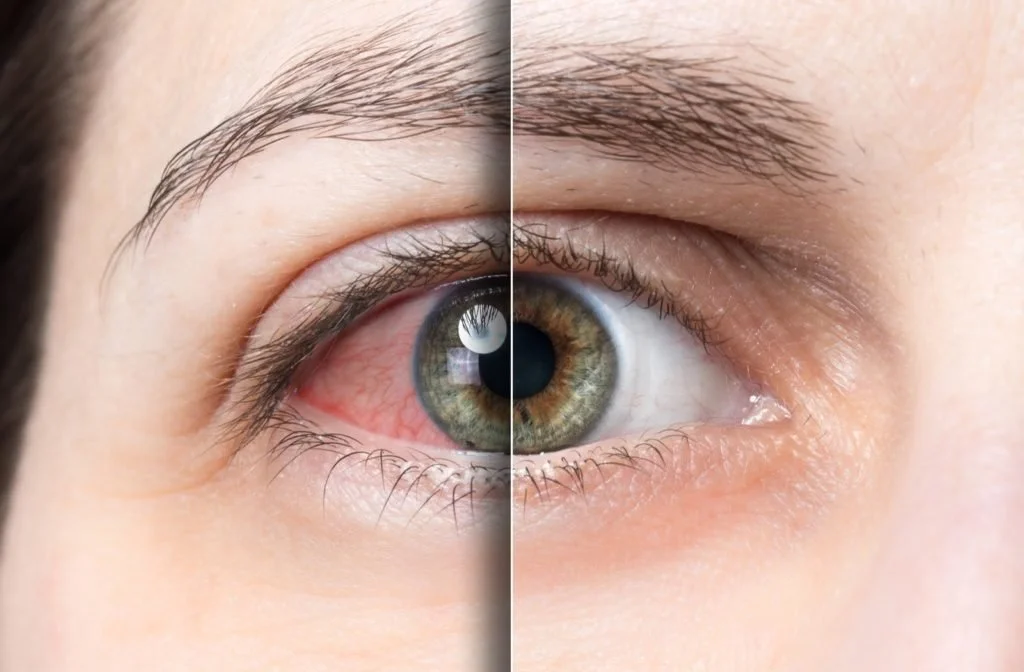Dry Eye Syndrome Treatment
Dry Eye Syndrome is a common condition that occurs when your eyes don't produce enough tears or when the quality of your tears isn't sufficient to properly lubricate the surface of your eyes. This can lead to discomfort, irritation, and in severe cases, vision problems. At Hashemi Eye Care, we offer a comprehensive approach to diagnosing and treating dry eye, helping you maintain eye comfort and protect your vision.
What Is Dry Eye Syndrome?
Dry Eye Syndrome (DES) occurs when your eyes are unable to produce adequate tears or the right balance of tear components. Tears are essential for maintaining a healthy, comfortable, and clear vision by lubricating the eyes, removing debris, and protecting against infection.
There are two main forms of dry eye:
Aqueous Tear-Deficient Dry Eye: This occurs when the lacrimal glands fail to produce enough tears.
Evaporative Dry Eye: This is caused by inflammation of the glands along the eyelid margins (Meibomian glands), which affects the oil layer of the tear film and leads to quicker evaporation of tears.
Symptoms of Dry Eye Syndrome
Symptoms can range from mild to severe and may include:
Burning or stinging sensations
Redness or irritation
Blurry vision, especially after prolonged activities like reading or screen use
A feeling of something gritty in your eyes
Excessive tearing, which can paradoxically be a sign of dry eye
If you’re experiencing any of these symptoms, it’s important to schedule an evaluation. Visit our Comprehensive Eye Exam Page to learn more about the diagnostic process.
How Is Dry Eye Diagnosed?
At Hashemi Eye Care, we use advanced diagnostic tools to determine the type and severity of your dry eye condition. During your eye exam, we will assess your tear production and the quality of your tear film using the following techniques:
Schirmer Test: This test measures the amount of tears your eyes produce to determine whether you have aqueous tear deficiency.
Tear Breakup Time (TBUT): This evaluates how quickly your tears evaporate, helping us identify if there are issues with the oil layer of your tear film.
Meibomian Gland Evaluation: We evaluate your Meibomian glands for blockages or inflammation that may be causing evaporative dry eye; learn more on our Meibomian Gland Expression page.
Early detection and proper diagnosis are key to developing an effective treatment plan. To schedule your dry eye evaluation, visit our Contact Page.
Dry Eye Syndrome Treatment Options
We offer a variety of treatment options depending on the severity and type of dry eye syndrome you’re experiencing:
1. Artificial Tears and Eye Drops
For mild cases, over-the-counter or prescription artificial tears can help supplement your natural tear production. We offer a variety of options to fit your needs, including:
2. Prescription Medications
For more persistent or severe dry eye cases, we may recommend prescription treatments such as anti-inflammatory medications like Loteprednol etabonates or more specifically Eysuvis, which reduce inflammation in the eye and improve tear quality.
3. Warm Compresses and Lid Hygiene
For evaporative dry eye, warm compresses can help to unblock the Meibomian glands and promote healthy oil production in your tears. We also provide guidance on proper eyelid hygiene to maintain healthy tear film production.
4. Punctal Plugs
For patients with moderate to severe dry eye who don't respond to eye drops alone, we may recommend punctal plugs. These tiny devices block the tear ducts, keeping more tears on the surface of the eye.
5. Meibomian Gland Expression
In-office treatments like Meibomian Gland Expression can effectively unblock glands, improve oil flow, and provide relief from evaporative dry eye. Learn more about this procedure on our Meibomian Gland Expression page.
Managing Dry Eye at Home
In addition to professional treatment, there are several ways you can manage dry eye at home:
Stay Hydrated: Drinking plenty of water helps ensure your body can produce sufficient tears.
Use a Humidifier: Adding moisture to the air can help prevent your tears from evaporating too quickly.
Take Breaks During Screen Use: Follow the 20-20-20 rule: Every 20 minutes, look at something 20 feet away for at least 20 seconds to reduce digital eye strain.
For more tips on maintaining your eye health, visit our Eye Health Page.
Risk Factors for Dry Eye Syndrome
Several factors can increase your risk of developing dry eye syndrome, including:
Age: Dry eye becomes more common as you get older, particularly for those over 50.
Gender: Women are more likely to develop dry eye due to hormonal changes, especially during menopause.
Medications: Certain medications, such as antihistamines and antidepressants, can reduce tear production.
Environmental Factors: Exposure to wind, smoke, or dry climates can exacerbate dry eye symptoms.
Schedule Your Dry Eye Evaluation
If you’re experiencing discomfort or symptoms of dry eye, don’t wait. Early intervention can help prevent complications and improve your comfort. Visit our Contact Page to schedule your dry eye evaluation and discuss personalized treatment options.
External Resources
For more information about Dry Eye Syndrome, visit:



